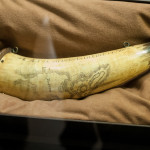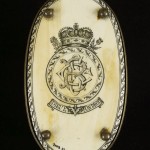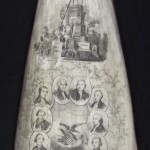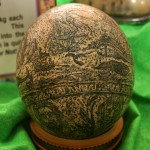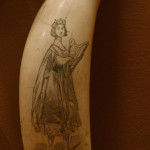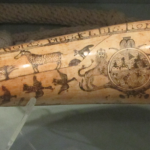- Image courtesy user allesok at flickr.com.
- Image courtesy Walters Art Museum via Wikipedia Commons.
- Image courtesy user Neochichiri11 at English Wikipedia
- Image courtesy user cliff1066tm at flickr.com.
- Scrimshaw horn courtesy user Rusty_Clarke at flickr.com.
- Image courtesy user rept0n1x at Wikipedia Commons.
I did a good stretch of my teen years in Massachussetts and Rhode Island. When we read Moby Dick in high school, the notion of whaling wasn’t something exotic or distant. My school organized yearly trips to Provincetown. At the time, this was a valuable educational opportunity for many kids to catch their very first glimpse of an openly gay man. Also whales, a boat ride away. And scrimshaw, under glass in tiny museums dedicated to the lost days of the whalers and their lonely wives, pacing the widow walk on the upper floor and praying for a husband’s safe return… or maybe for him not to return at all.
I liked the idea of the bison people of Northern Arcadia decorating their own horns with scrimshaw, with designs used to communicate stuff like family, rank within the hierarchy and any notable personal achievements. The colonial period is not a good period for my bison folk; many of them are enslaved and set to work in the southern plantations or shipped overseas in chains to a Dominion work house, where the life expectancy for even the toughest bulls is less than three months.
But even in bad times, maybe especially in bad times, humans are capable of producing artwork of great beauty. (See my previous, halting effort to talk about blues and ‘American’ music.) I didn’t see why my poor sweet dumb bison people would be capable of anything less.

